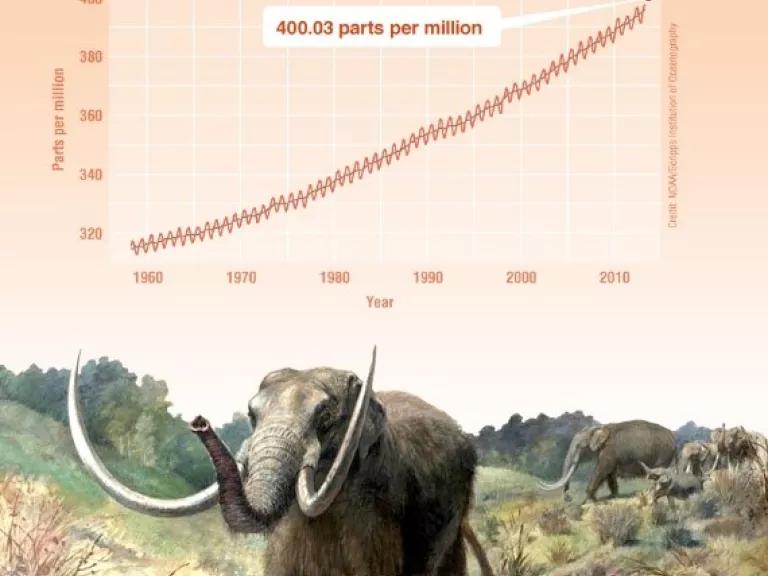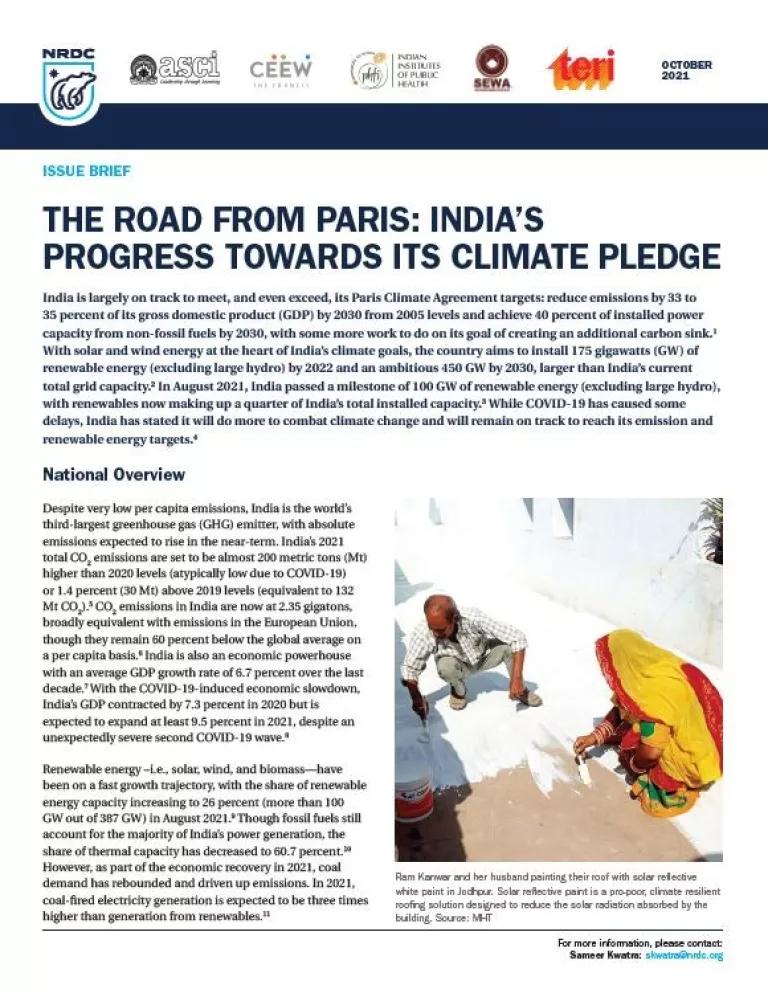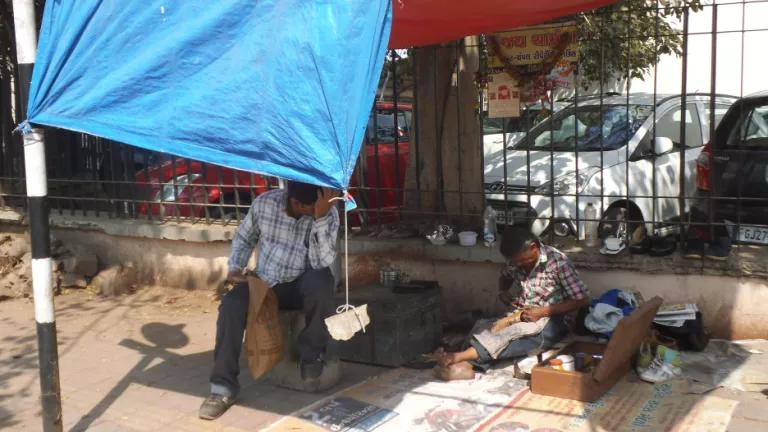India’s Climate Journey from Paris to Glasgow
India is key to a successful outcome at the global climate negotiations beginning next week in Glasgow, just as it was during the Paris talks six years ago.

India is key to a successful outcome at the global climate negotiations beginning next week in Glasgow, just as it was during the Paris talks six years ago. Since the Paris Agreement in 2015, the world has made progress on climate goals, especially with an unprecedented expansion of renewable energy, but it is not enough. The planet is already 1.2 degree Celsius warmer than pre-industrial times and, as warned by the new UN emissions gap report, unless countries agree to drastic and accelerated decarbonization soon, we are on course for a catastrophic 2.7 degrees temperature rise by the end of this century. The last time carbon dioxide concentrations were this high was 3- 5 million year ago when sea levels were 20 meters (60 feet) higher than they are today, and there were no humans on the planet.
For the countries meeting at the Glasgow Conference of Parties (COP), the stakes couldn’t be higher. Just additional temperature increase of a half degree Celsius can have devastating consequences for millions of people around the world along with incalculable loss of biodiversity. As compared to a temperature rise of 2 degrees, at 1.5 degrees, about 420 million fewer people would be exposed to extreme heatwaves, 65 million fewer people would be exposed to exceptional heatwaves and 61 million fewer urban dwellers would be exposed to severe drought.
India brings a multi-faceted perspective to the climate debate. The country has a pivotal role in future greenhouse gas mitigation, and at the same time has massive climate adaptation needs with millions already suffering due to extreme heat, drought, and floods. With most of the country's infrastructure still being built, and the energy supply of the future yet to be installed, India has the opportunity to establish a low carbon development paradigm for the rest of the developing world. The Indian government has largely espoused this vision. However, for India to achieve this vision, greater flows of climate finance and technical collaboration are essential, and are key issues of discussion at the Glasgow COP.
In the run up to the climate conference every year, NRDC and partners publish an annual review of India’s actions on climate change. Our latest assessment, The Road from Paris: India’s Progress Towards its Climate Pledge, published today, finds that India is largely on track to meet, and even exceed, its Paris Climate Agreement targets: reduce emissions by 33 to 35 percent of its gross domestic product (GDP) by 2030 from 2005 levels and achieve 40 percent of installed power capacity from non-fossil fuels by 2030, with some more work to do on its goal of creating an additional carbon sink. CO2 emissions in India are now at 2.35 gigatons, broadly equivalent with emissions in the European Union, though they remain 60 percent below the global average on a per capita basis. The past one year has been eventful in terms of climate action in India.

Highlights of India’s climate actions include:
- Rapidly growing renewables: The share of installed capacity from renewable energy sources (not including large hydro) has increased to 26 percent (more than 100 GW out of 387 GW) in August 2021.
- A new Hydrogen Mission gaining steam: To support its clean energy transition, India plans to launch a new hydrogen mission, which will explore how green hydrogen can be utilized by existing end users of hydrogen such as refineries and fertilizer plants, blended with natural gas for CNG users and piped natural gas, used as fuel for longer-range vehicles and heavy-duty trucks, and used in heavy industries like cement and steel.
- Increasingly Competitive Solar Power: Solar power tariffs have been continually falling throughout 2020, showing investor confidence despite the pandemic. Tariffs for solar energy projects reached record lows of 1.99 Indian rupees (₹) (US$ 0.0269)/kWh at a December 2020 auction for solar projects in Gujarat. Four companies quoted the low bid, and NTPC, India’s largest power company, secured 200MW of solar capacity. Additionally, India took encouraging steps towards Round-The-Clock (RTC) renewable power supply in August 2020 when ReNew Power signed a PPA with Solar Energy Corporation of India, a central government owned entity, to supply RTC renewable electricity, the first of its kind in India.
- Advancing Electric Mobility: Under Phase-II of the Faster Adoption and Manufacture of (Hybrid and) Electric Vehicles (FAME) Scheme, India allocated ₹10,000 crore (US $1.4 billion) for advancing electric mobility in public transportation fleets, four-wheelers, and three-wheelers, and privately owned two-wheelers, as well as electric vehicle charging infrastructure.
- Advancing Energy Efficient Buildings: As of July 2021, 18 states and two Union Territories have notified the Energy Conservation Building Code (ECBC), which ensures energy savings in the construction and operation of buildings in India. The Bureau of Energy Efficiency (BEE) also recently announced the National Energy Efficiency Roadmap for Movement towards Affordable and Natural habitat (NEERMAN) Awards for Energy Efficient Buildings in India, to highlight and acknowledge exemplary building designs that comply with the ECBC.
- Ratifying Climate Friendly Cooling Commitments: In August 2021, India committed to ratifying the Kigali Amendment, the global pact to phase down super climate-polluting hydrofluorocarbons (HFCs) commonly used in cooling appliances and insulating foams.
India has made strong progress on its climate commitments and remains a key international stakeholder when it comes to increasing ambition and charting a low carbon future. Prime Minister Modi has announced India’s ambitions to be energy independent by 2047. Given the urgent need for all countries in the world to do more to combat the climate crisis, much of the developed world needs to increase their financial support for climate action and enhance technological collaboration with developing countries. At the same time, for safeguarding the future of millions of vulnerable people in India, and across the world, India and other major economies need to accelerate their transition away from fossil fuels and ensure a green and sustainable future for all. The next few days will reveal how India and other nations respond to the climate challenge.
The NRDC team will be in Glasgow, actively tracking the negotiations. Here’s a list of key climate and clean energy experts and events that we are organizing.
NRDC and partners are organizing an India focused event titled Changing the Climate for the Most Vulnerable: Lessons on Climate Resilience in India, from Green Villages to Cool Cities on Nov 9th at 3 pm local time, 8.30 pm IST, 10am ET. To register click here.




